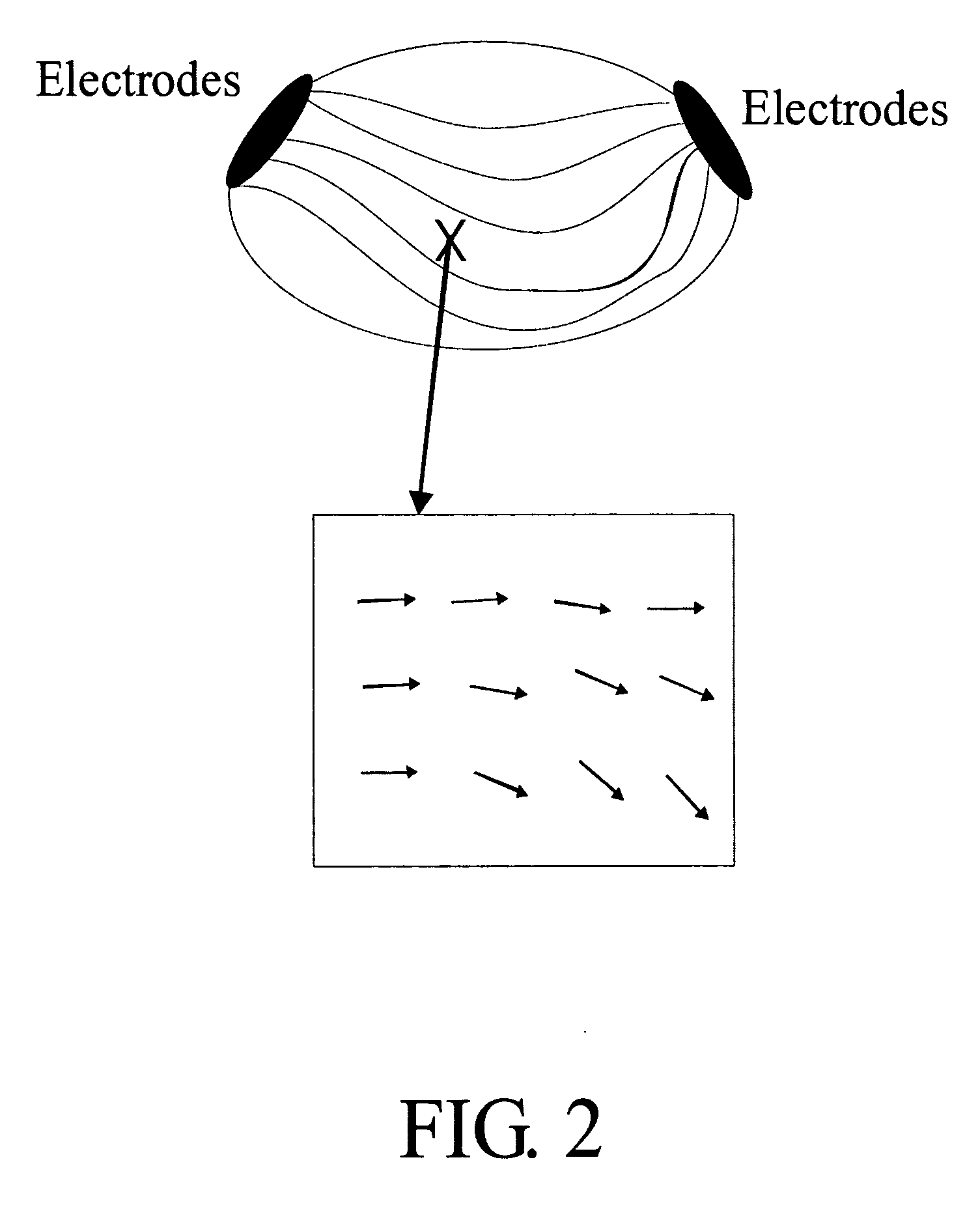Current density impedance imaging (CDII)
- Summary
- Abstract
- Description
- Claims
- Application Information
AI Technical Summary
Benefits of technology
Problems solved by technology
Method used
Image
Examples
embodiment
Preferred Embodiment
The current density vector information can be acquired using any current measurement techniques. Presently, the preferred method is to use the current density imaging (CDI) technique which utilizes a magnetic resonance imager to measure current density at all points within the object.
FIG. 4a shows a block diagram of the current density imaging (CDI) technique described in G. C. Scott, M. L. G. Joy, R. L. Armstrong, and R. M. Henkelman, “Measurement of nonuniform current density by magnetic resonance,”IEEE Trans. Med. Imag, vol. 10, pp. 362-374, 1991 which utilizes a magnetic resonance imager to measure current density at points within the object. The CDI system is set up by placing two or more electrodes on the surface of the object. For the present application, the current electrodes can be placed anywhere on the object as long as at least two sets of nonparallel current distributions can be created inside the object. All wires connecting to the electrodes are...
PUM
 Login to View More
Login to View More Abstract
Description
Claims
Application Information
 Login to View More
Login to View More - R&D Engineer
- R&D Manager
- IP Professional
- Industry Leading Data Capabilities
- Powerful AI technology
- Patent DNA Extraction
Browse by: Latest US Patents, China's latest patents, Technical Efficacy Thesaurus, Application Domain, Technology Topic, Popular Technical Reports.
© 2024 PatSnap. All rights reserved.Legal|Privacy policy|Modern Slavery Act Transparency Statement|Sitemap|About US| Contact US: help@patsnap.com










